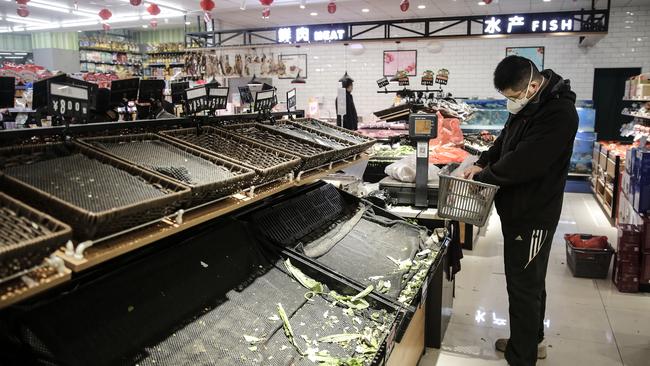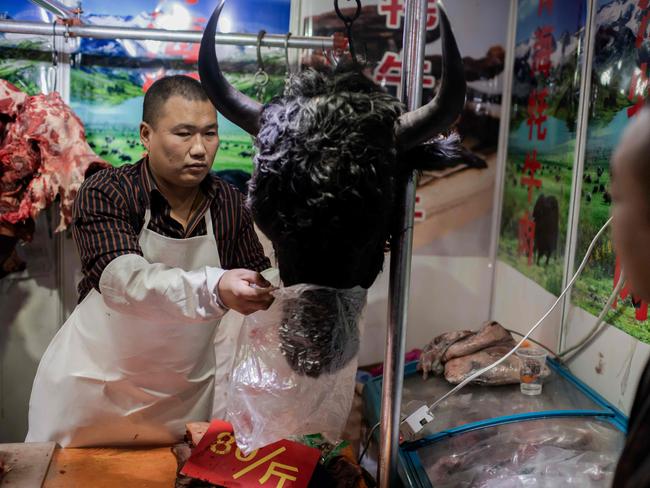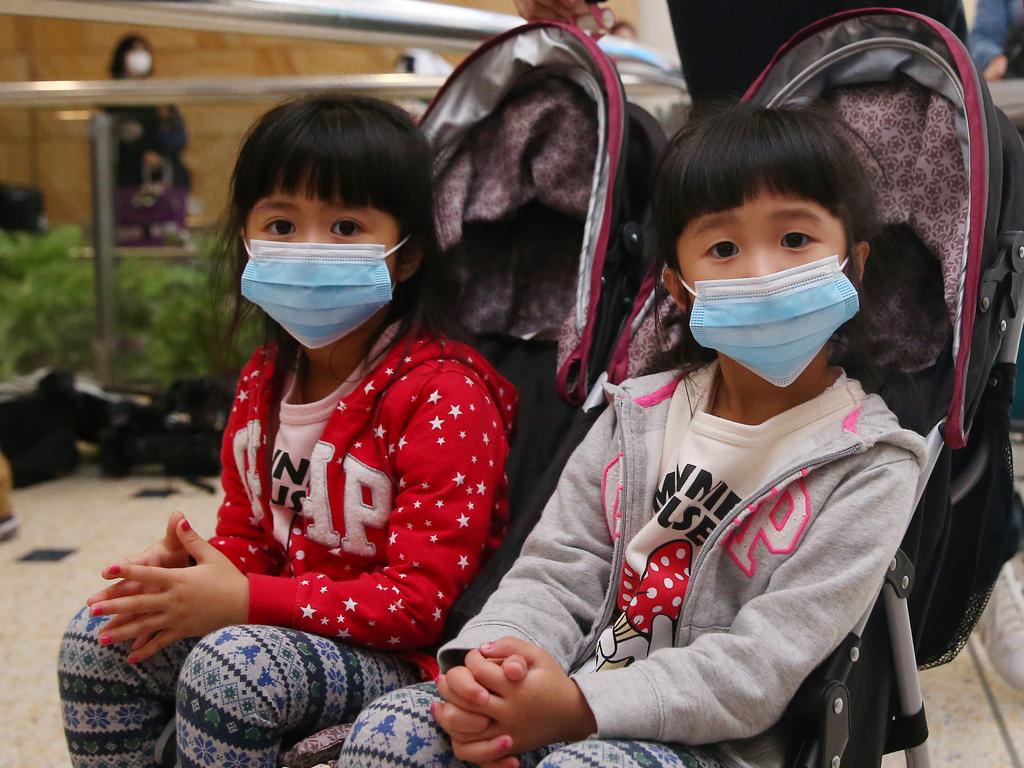Coronavirus: Scientists examining virus outbreak suspect it was passed to humans from snakes
Scientists examining the virus outbreak suspect that it was passed on to humans from snakes sold at a market in Wuhan where the outbreak began.

Scientists examining the new coronavirus suspect that it was passed on to humans from snakes that were sold at a market in the city where the outbreak began.
Zhong Nanshan, a Chinese government medical adviser, also identified badgers and rats as possible sources.
Beijing health officials warned that the deadly virus could mutate and spread further.
The suspicions were expressed as five Chinese cities were quarantined in an unprecedented move to try to stem the outbreak.
Beijing gave the order to close Wuhan, where the virus was first identified, on Wednesday night, blocking its 11 million residents from leaving. They were given just a few hours’ notice. During the course of yesterday four more cities were locked down, with airports, railways and roads shut. At least 18 people have died of the virus since it broke out in December.
The neighbouring city of Huanggang was locked down from midnight yesterday, while in Ezhou train stations were closed. The two other towns of Xiantao and Chibi closed a main highway and suspended public transport. All five are in the same province, Hubei.
The Wuhan Health Commission said that there were long queues at fever treatment centres, as well as a “tight situation” in terms of beds available. It said that seven hospitals were being “fully utilised” with 3000 beds set aside to treat suspected and confirmed cases. The Renmin Hospital of Wuhan University issued an appeal to alumni for donations of masks and protective clothing.
Meanwhile, Health authorities in NSW have confirmed that four people in the state are currently under investigation for potential coronavirus infection. NSW Health on Friday said all four people were in undisclosed hospitals around the state and that none had yet been confirmed coronavirus sufferers. Only one person - who had been in Wuhan in the past fortnight and has since come down with flu-like symptoms - had been under investigation by NSW Health on Thursday.
Jeremy Farrar, director of the Wellcome Trust, said: “We don’t want to overstate the panic because there is so much uncertainty. We want to keep a sort of calm, moderated approach to it, but we do have to take this incredibly seriously because you don’t often get an animal virus coming into humans, passing between humans and being spread by the respiratory route.”

Beijing said it had contacted a Chinese woman from Wuhan who had flown to France exhibiting symptoms and urged her to go to hospital.
It is the first time in the modern history of epidemics that a government has attempted to isolate an entire city, and two days before the lunar new year, when hundreds of millions of Chinese people travel across the country and the world to be with their families.
Beijing’s Palace Museum — known as the Forbidden City — is to be closed to tourists from Saturday in an attempt to stop the spread of infection. The Beijing authorities have also cancelled large new year events such as temple fairs. Last year about 1.4 million holidaymakers attended the fairs.
Wuhan has 60 international air connections, including direct flights to London, New York, Paris, San Francisco and Sydney, as well as more than a hundred domestic destinations.
Travellers flying into Britain from Wuhan just before the quarantine were screened for signs of illness.
Cases of coronavirus, which is from the same family of viruses that gave rise to the deadly outbreak of Severe Acute Respiratory Syndrome (Sars) that raged in China between 2002 and 2003, have been confirmed in the US, Taiwan, Japan, South Korea and Thailand. The patients were either residents of Wuhan or recent visitors to the city. Singapore and Vietnam confirmed cases yesterday.

Chinese state media said that among those suspected of being infected was Wang Guangfa, a doctor who went to Wuhan with a team of experts to investigate the virus.
Gao Fu, the head of the Chinese Centre for Disease Control, said that the coronavirus would continue to develop. “It has developed different features compared with the early stage, and the prevention and precautionary measures need to change accordingly,” he said. Mr Gao said that officials were working on the assumption that the outbreak resulted from exposure to wild animals sold illegally at a food market in Wuhan and that the virus was mutating, which could make it spread faster or make people who acquired it sicker. In more severe cases it can cause pneumonia and breathing difficulties.
The largest number of infections outside China has been in Thailand. Anutin Charnvirakul, Thailand’s public health minister, insisted that no secondary infection had taken place in his country, saying: “We checked all of them: taxi drivers, people who wheeled the wheelchairs for the patients, doctors and nurses.”
Hong Kong confirmed two cases on Wednesday, including a man who had arrived from mainland China on a high-speed train. It has designated two holiday camps as quarantine zones for those suspected of having been exposed.
Cathay Pacific Airways in Hong Kong announced that it would allow flight crew to wear surgical masks while flying within mainland China.
In Macau, another semi-autonomous city, authorities have cancelled new year events.
People queued outside pharmacies in Wuhan to buy masks, but sales were limited to one package per customer. Staff in protective suits could be seen carrying supplies and stretchers into the Wuhan treatment centre.
Compared with the prolonged cover-up of the Sars outbreak, the authorities have been relatively open about the epidemic. There are suspicions, however, that there are many more cases of the coronavirus than the official tally.
Gilead Sciences, a drug company, said yesterday (Thursday) that it was examining whether its experimental ebola treatment could be used to treat the coronavirus.
“Gilead is in active discussions with researchers and clinicians in the United States and China regarding the ongoing Wuhan coronavirus outbreak and the potential use of remdesivir as an investigational treatment,” a company spokesman said in an emailed statement.

THE SCIENCE OF HOW IT CAN JUMP SPECIES
Tom Whipple reports: Viruses have one goal: to reproduce. And they don’t generally care where they do it. They can do it in bats, they can do it in humans, they can do it in snakes - and it’s even better, from their point of view, if they can do it in all three.
Jumping the species barrier, however, as happened with the coronavirus, is difficult — especially so if, as some scientists now believe, the last host is a distantly related species like a snake. To successfully live in one species you have to find a way to evade its immune system, to hijack its cells to your own ends and then also find ways to make that species spread you — through sneezing, or sex or some other method. This means that diseases are often very well adapted to one host.
However, diseases also reproduce rapidly, which means they can evolve rapidly. All it takes is a few mutations that are advantageous (again, very much from the point of view of a virus), and a disease can find a home in a new species. A few more mutations, and it can use this foothold to become successful and spread.
To make such a sequence of beneficial mutations is extremely unlikely for one virus, but becomes a lot more likely when you realise there are trillions of them.
This is why many human diseases originated in animals, with a whole new wave dating to the domestication of livestock. A bacterium, Yersinia pestis, lives in rodents largely unnoticed. When it started infecting humans as well it became something that we did notice: the Black Death.
What is strange about the findings on the new coronavirus is that if the scientists doing the genetic analysis are correct, it probably spread first from bats, then into snakes - an animal with a physiology very different from bats - then into humans.
It is one thing to catch a disease from a primate, or even a rat - both are mammals. It is quite another to catch one from a cold-blooded reptile whose last common ancestor with us lived some 300 million years ago.
The Times





To join the conversation, please log in. Don't have an account? Register
Join the conversation, you are commenting as Logout